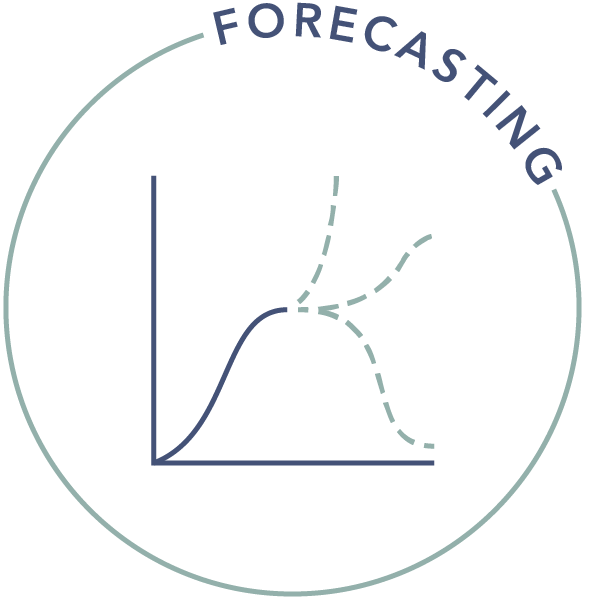Many decisions affecting millions of people are made by small groups, using opaque processes with unknown track records. Quantitative forecasting enables decision-making with a higher degree of transparency, accountability, and accuracy.

Forecasting
We seek to support people and organizations in the forecasting community, in order to improve how crucial decisions are made.
Over the past few decades, quantitative approaches to prediction and decision-making have seen tremendous success in sectors as diverse as finance, sports, and retail. And yet, in many other domains, individuals tasked with decisions that will affect the lives of millions or even billions of people — among them politicians, government officials, managers, and scientists — routinely decide based on idiosyncratic processes, and vague, qualitative assessments of the future.
As a result, when disaster strikes — wars, pandemics, terrorism — it’s hard to evaluate whether the institutions tasked with preventing or managing these events could have foreseen them. This limits our abilities to learn from such events in a structured way, and gives us little guidance on whom to trust with such decisions and to what degree.
Alternatively, we can use quantitative forecasting, which expresses uncertainty about future events in the form of probabilities, and keeps score of the accuracy of these forecasts once the events have happened. The expression of probabilities reduces communication error resulting from vague qualitative assessments of the future. Pioneering work by psychologist Philip Tetlock demonstrated that selecting excellent forecasters, training them (using e.g. calibration training), and aggregating their forecasts can make these forecasts more accurate, including in high-stakes situations (for example, national elections or geopolitical crises).
At Open Philanthropy, we’ve found forecasting to be a useful tool for our own decision-making; our grantmaking staff often make predictions about core outcomes for grants they approve. And we’ve been making grants to forecasting-related projects since 2015; we’ve supported research by Tetlock and the Forecasting Research Institute, as well as forecasting platforms such as Metaculus, Hypermind, and INFER (through our grant to ARLIS).
To further our work on forecasting, we launched forecasting as an independent cause area in 2024. As this is a new area, our grantmaking so far doesn’t cover the full scope of our priorities; we expect to fund many other kinds of projects in the future.
However, our priorities for future grants will be guided by the same principles we used for past grants; our ultimate goal is to enable more high-quality forecasts on questions relevant to high-stakes decisions. Among other areas, we expect to (continue to) find promising opportunities in:
- Platform development and practical forecasting tools.
- Forecasting research.
- Forecasting tournaments focused on particularly crucial questions, including — but not restricted to — questions informing work in our other focus areas.
- Projects furthering the adoption of quantitative forecasting in high-stakes contexts.
The following Open Philanthropy staff work on the Forecasting program.
Forecasting, at a glance
-
28 Grants
Made -
$41+ Million
Given

